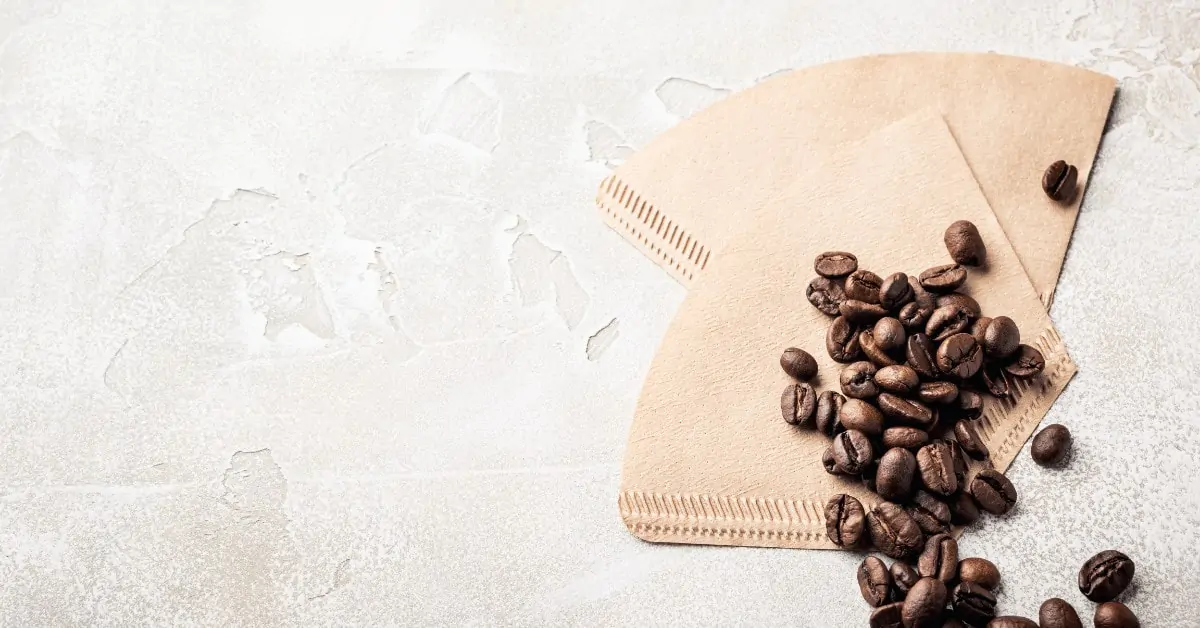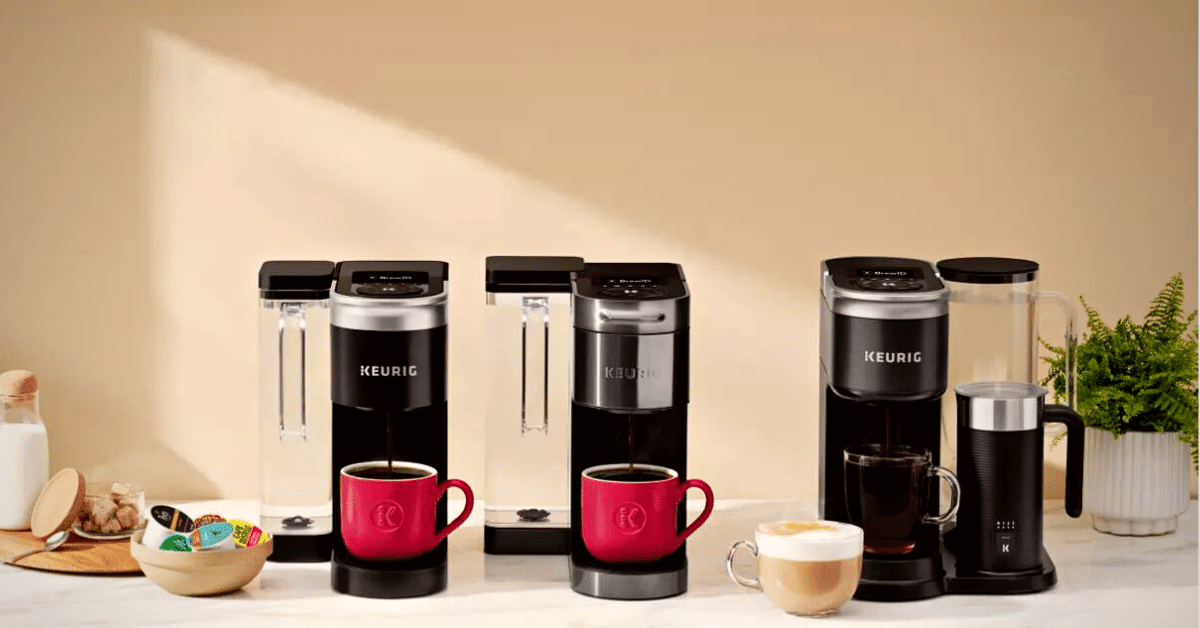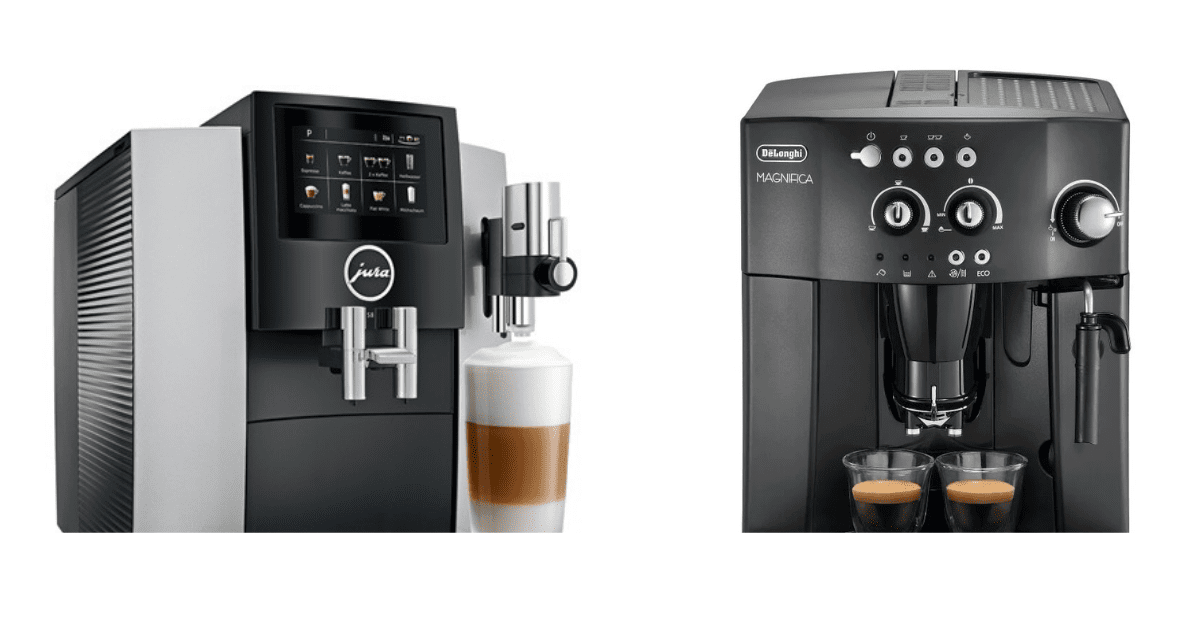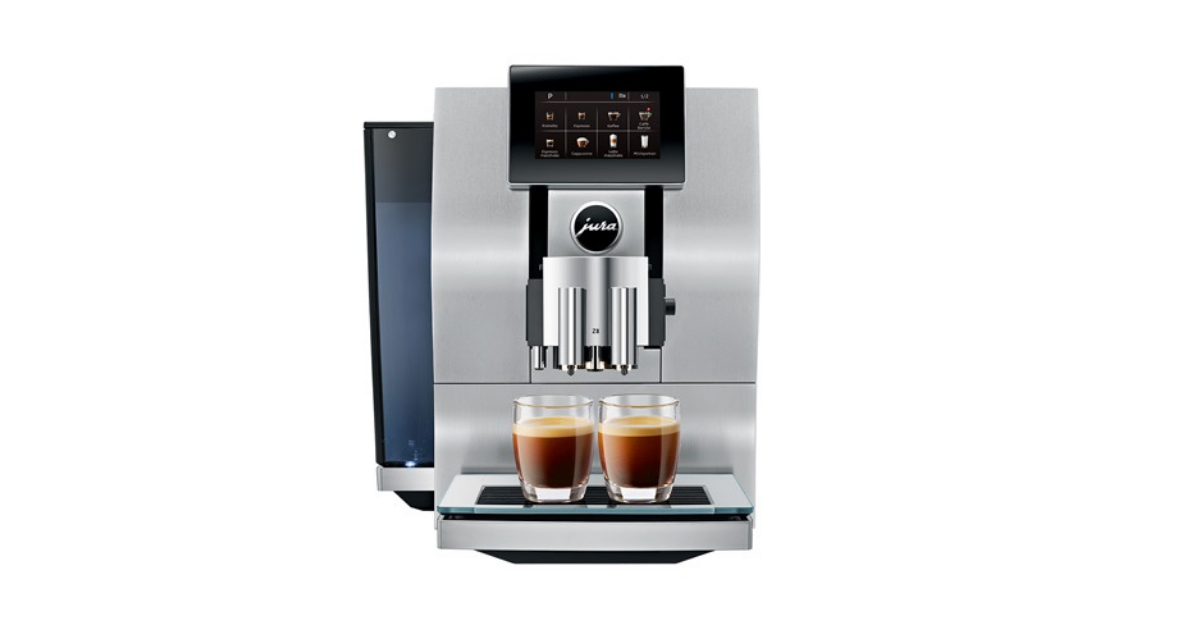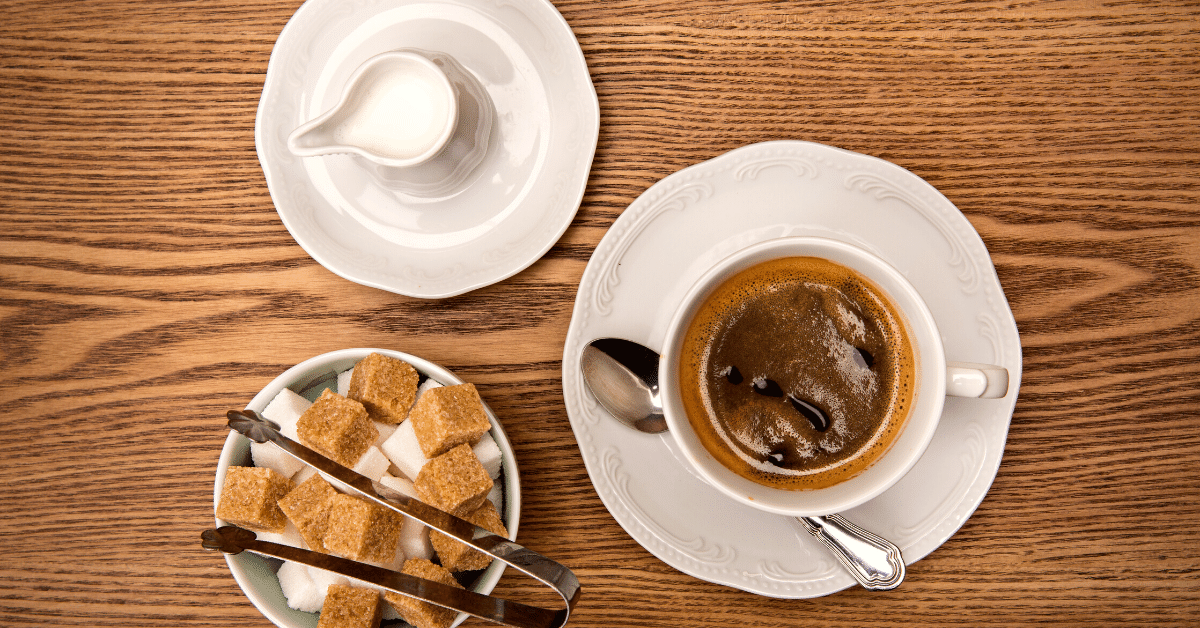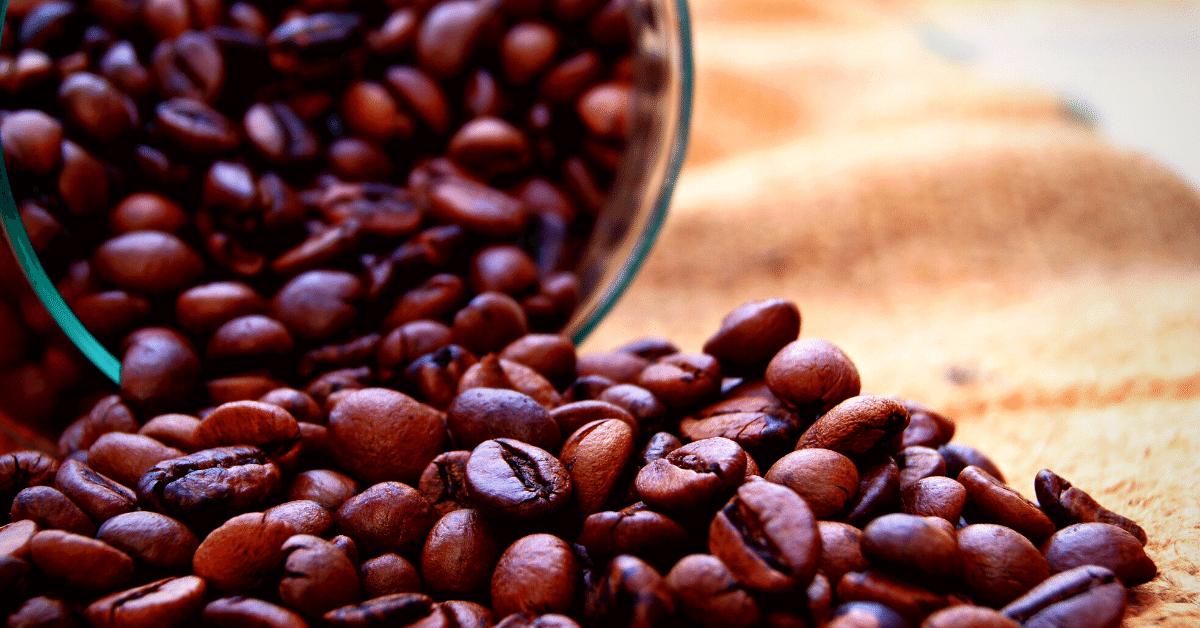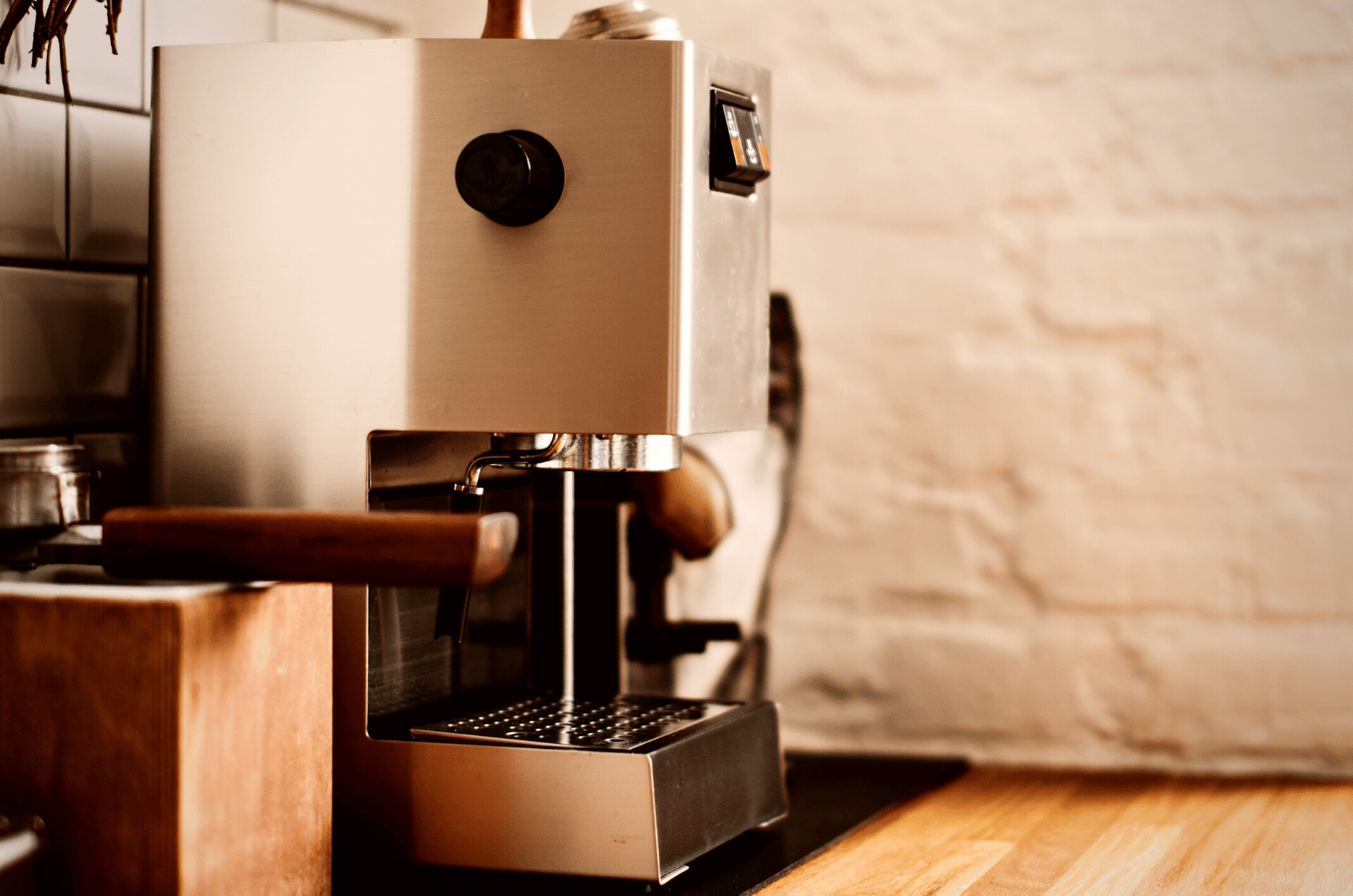Did you know that the choice of coffee filter can make or break your brew?
A coffee filter affects the flavor and texture of your coffee, and if you don’t choose carefully, you might end up with an undrinkable cup of joe.
But don’t worry, I’ve got you covered.
After hours of research, I can tell you everything you need to know about coffee filter sizes, types, and shapes to help you pick the best option.
Keep reading!
An Overview of Coffee Filter Sizes
Before diving into my detailed guide to coffee filters, let’s get straight to the point. Here is a quick overview of different coffee filter sizes you can choose from.
Basket filters
Most basket filters are sold in 8-12 inch sizes. If your appliance uses smaller ones, you’ll need to search for junior-sized basket filters.
Cone filters
Cone filters come in four standard sizes: #1, #2, #4, and #6, with numbers relating to the size of your coffee maker.
Here’s what those numbers mean:
- #1 – suitable for one-cup coffee machines
- #2 – for 2-6 cup coffee makers
- #4 – designed for 8-12 cup coffee makers
- #6 – suitable for coffee makers with a very large cup capacity
The majority of models use either #2 or #4 coffee filters.
Chemex filters
Chemex filter comes in only one size, but it’s suitable for all sizes of Chemex coffee makers: 3, 6, 8, and 10 cups.
V60 filters
V60 filters come in sizes: 01 and 02. These are suitable for two different sizes of V60 coffee makers.
Kalita Wave filters
Kalita Wave filters are available in two sizes: 155 and 185. These different sizes are suitable for corresponding-sized Kalita drippers. However, you can also use these filters for most flat-bottomed drip machines.
How Do Coffee Filters Work?
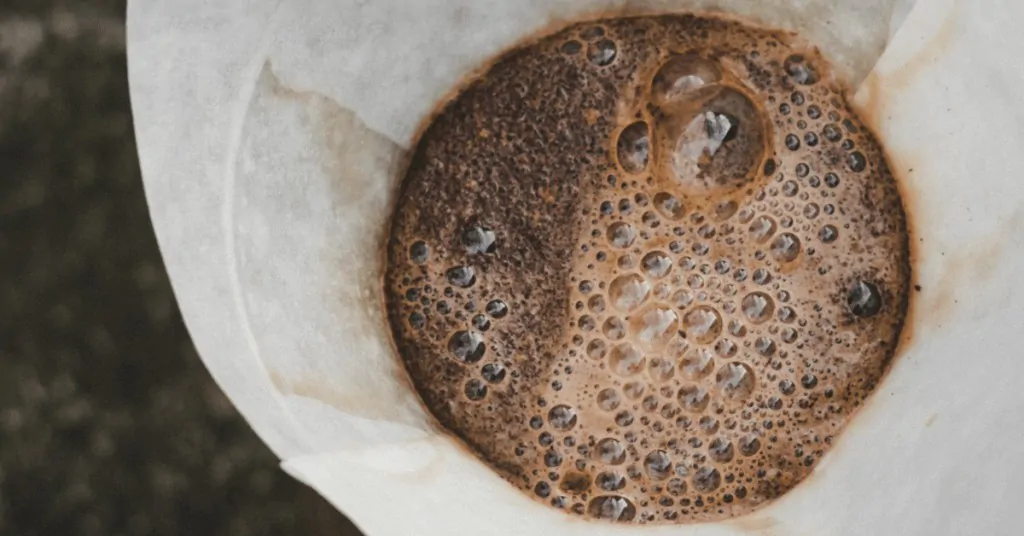
The science behind coffee filters is pretty simple.
They serve to separate your grounds from your coffee.
Now, depending on your choice of filter, it might also keep oils and sediments out of your cup of java.
What’s more, the filter helps you control the degree of extraction. This is because the shape of the filter affects the way water flows through the ground coffee.
But in order to fully understand how a filter works and how to choose the right size, we need to talk about different filter types and shapes first.
Types Of Coffee Filters
Filters are first sorted into types by the material the filter is made of.
There are tons of options on the market, and the ones most commonly used are paper, metal, and cloth filters.
Paper Filters
Paper filters are probably the most common.
You can buy them in pretty much any grocery store.
The paper is tightly woven, so this type of filter removes a large portion of oils and sediments from your coffee. As a result, your brew is bright both in appearance and flavor.
There are two kinds of paper filters – bleached and unbleached.
Bleached paper filters
As you know, natural paper is not white.
It becomes that color through a bleaching process. The same happens with these filters.
Naturally, you’re probably wondering:
What’s the point of bleaching?
Glad you asked!
The bleaching process helps the paper trap the finest coffee particles. As a result, you get coffee with a smoother taste when you use a bleached filter.
Now, two things can be used for bleaching: oxygen and chlorine.
Between the two, oxygen is a more environmentally friendly option.
But that doesn’t mean it’s 100% safe. It still involves a chemical process that has a negative impact on the planet.
Unbleached paper filters
Unbleached coffee filters have the same color as the paper bags you get in grocery stores.
There’s no extra processing step like with bleached coffee filters. This makes it a much more environmentally friendly option.
One thing to keep in mind:
An unbleached filter might give your coffee a papery taste – but only if you don’t wet it before you begin brewing.
Now, this can also happen with certain low-quality bleached paper filters too. That’s why I’d always recommend wetting your filter, whether it’s bleached or not.
In terms of price, unbleached coffee filters cost a bit more. I don’t know what the deal is with that, considering they haven’t gone through an additional process like the bleached ones have.
One would think that makes them more affordable. But I guess one would be wrong.
So at the end of the day, it really comes down to your own personal preference and priorities.
BOTTOM LINE
Bleached filters are more affordable and do a slightly better job of filtering tiny particles. Unbleached, on the other hand, are more environmentally friendly.
Metal filters
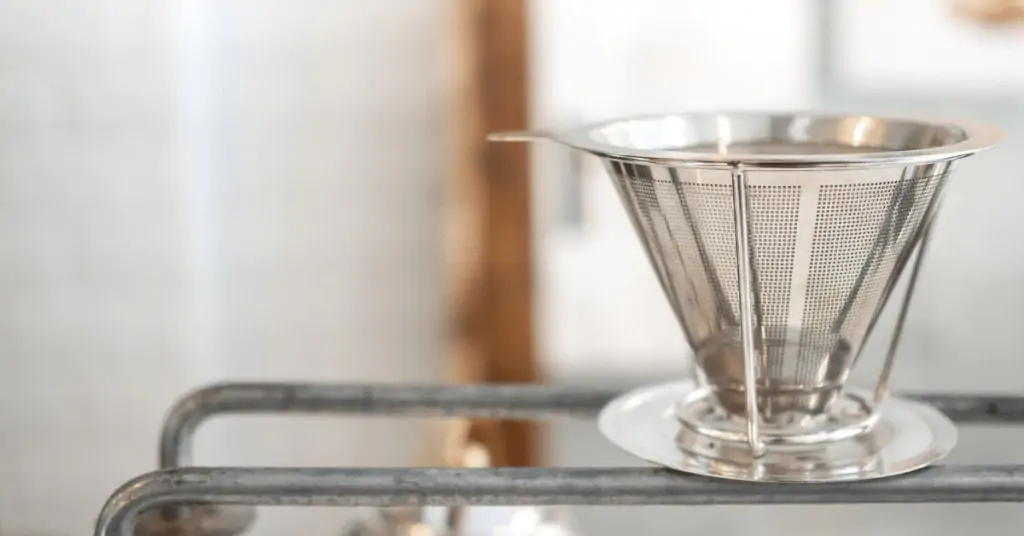
My main issue with paper filters is that they’re not reusable. You throw them away after each use, and I’m all for minimizing the impact on the environment as much as possible.
That’s where metal filters come in.
Upfront, they do cost more than paper filters. But with proper maintenance, a metal filter can be used to make countless cups of coffee. So, in the long run, it’s a more affordable option.
Metal filters use mesh to keep the grounds out of your coffee. But as you know, no mesh can be as tightly woven as paper.
Inevitably, this means coffee oils and the smallest particles will end up in your cup.
This is something you either like or dislike in your coffee. If you prefer your java to be bold and rich, then a metal filter is a go-to option for you.
Now for the bad part:
Metal filters are somewhat difficult to clean and maintain. Well, difficult compared to a paper coffee filter that you simply throw away after it’s done its part.
After each use, you need to throw away the grounds and wash the metal filter with soap and water. Make sure there are no grounds stuck in the mesh.
NOTE
You should also have a special monthly upkeep routine to keep it free of odor and flavor. You can do this with a mixture of water and vinegar, hydrogen peroxide, or a specialized coffee filter cleaner. You need to soak it in the solution for a few hours, then wash it with soap and water.
Cloth filters
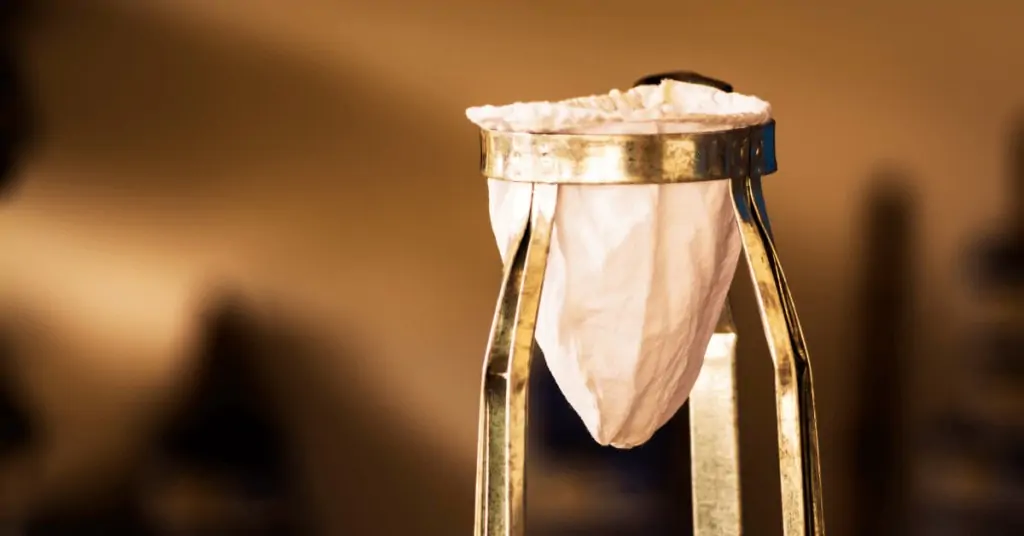
And then there are cloth coffee filters – the least popular option of the three.
In terms of performance, they fall somewhere between metal and paper filters.
They do a great job at keeping coffee grounds and particles out of your drink. But they do let some of the oils through. As a result, you get a strong coffee without any sediment.
Cloth filters sound ideal, don’t they?
They sure would be if only they weren’t so painfully hard to clean.
You need to wash them between each brew while at the same time not letting them dry out too much or stay too moist.
What’s more, they’re not as durable as metal filters.
They aren’t disposable either – you can use them more than 100 times. But at some point, they’ll start adding an unwanted flavor to your coffee, and you will have to toss them.
Coffee Filter Shapes
Choosing the right coffee filter doesn’t just revolve around the material it’s made of.
The shape plays an important role, too.
Conical filters
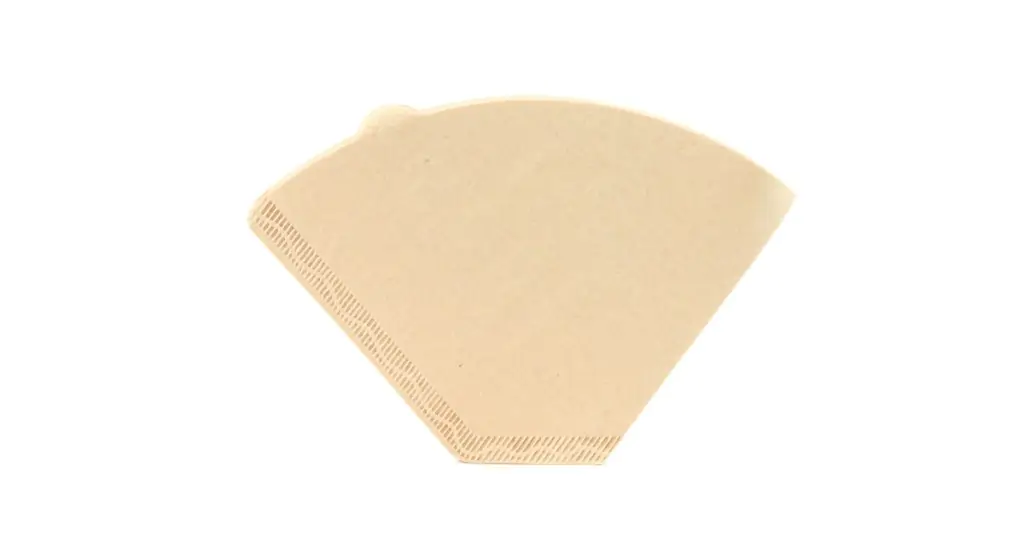
A conical coffee filter basically looks like an upside-down party hat.
This type of coffee filter is great for classic drip coffee makers because of its narrow bottom.
When you pour water over a cone-shaped filter, it passes evenly through the ground coffee, so you get a nice, even extraction. In other words, all the subtle flavors and aromas from the beans will make it into your cup, and it’ll taste perfect.
Basket

This type of coffee filter reminds me of a cupcake liner.
It has a flat bottom, quite unlike the pointy bottom on a cone coffee filter. This means your coffee grounds are evenly spread across the filter surface, so they might not have equal contact with the hot water.
As a result, a basket coffee filter extracts your coffee to a lesser degree than a conical filter.
But this isn’t necessarily a bad thing. If you prefer sweet and floral over earthy, umami notes, a basket filter is a better option than a cone.
KEEP IN MIND
The flavor of your brew is also heavily influenced by the type of beans you’re using, as well as the grind and your pouring technique.
Disk filters
Finally, disk filters are also worth mentioning.
They’re a lot smaller than other types of filters. As you can probably guess from the name, they’re round and completely flat, like a disk.
These are mainly used for the AeroPress and French press brewers.
If you use either of these coffee brewing methods, you should know there are steel disks that you can use instead of a paper filter.
Coffee Filters For Specific Brewing Methods
You’ve got standard coffee filters that you can buy everywhere.
But then you’ve also got a few coffee brewing methods that use specialized filters.
They’re somewhat different in shape, so they can fit into these brewers properly, as well as let some air through.
Chemex
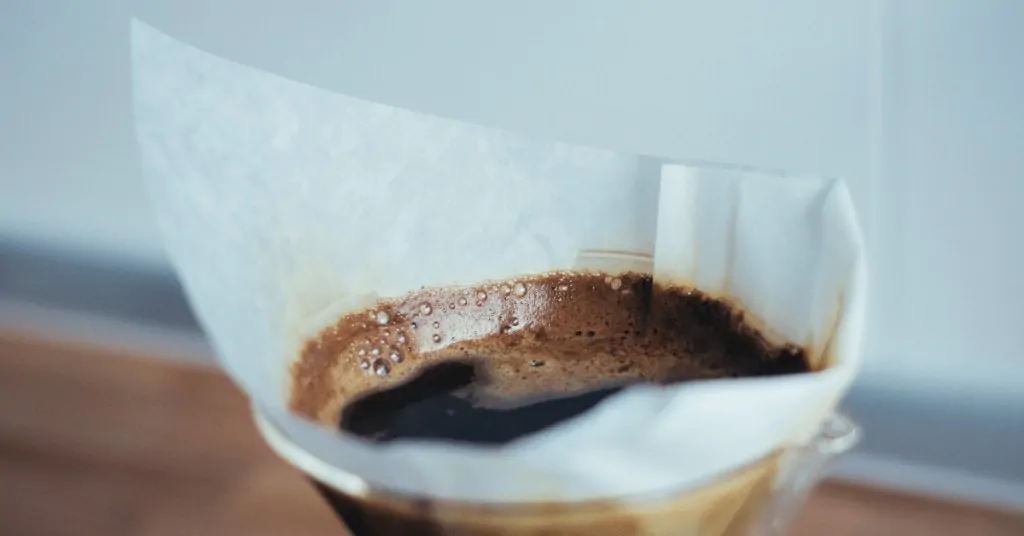
The Chemex brewer is best known for the light, clean and delicate coffee it makes.
This is achieved by using a thick paper filter. It’s 20-30% heavier than other paper filters, which keeps any and all particles and oils out of your coffee.
This cone filter is great if you like thin-textured coffee.
Kalita Wave
The Kalita Wave drip coffee maker uses a paper basket filter with vertical ridges.
They’re designed in such a way as to keep your grounds away from the walls so that air can pass through. What this does is helps your coffee get more evenly extracted.
Hario V60
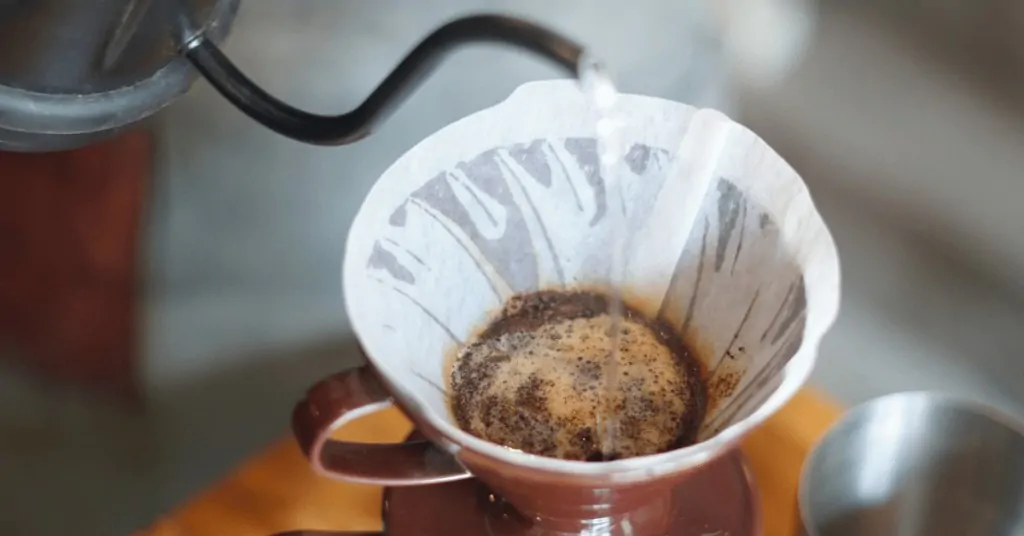
Hario filters come in two types and sizes: filters for the Hario V60-01 and V60-02 pour-over brewers.
The difference between the two lies in the larger opening on the V60-02 model.
These paper filters are cone-shaped and extremely thin. This makes your coffee brighter and more complex.
AeroPress
AeroPress filters are disk-shaped, which makes them different than other filters.
They’re thinner than most other filters, so they don’t have to be rinsed before use.
But that also means an AeroPress filter won’t give you a completely sediment-free cup like some other types of filters.
FAQ
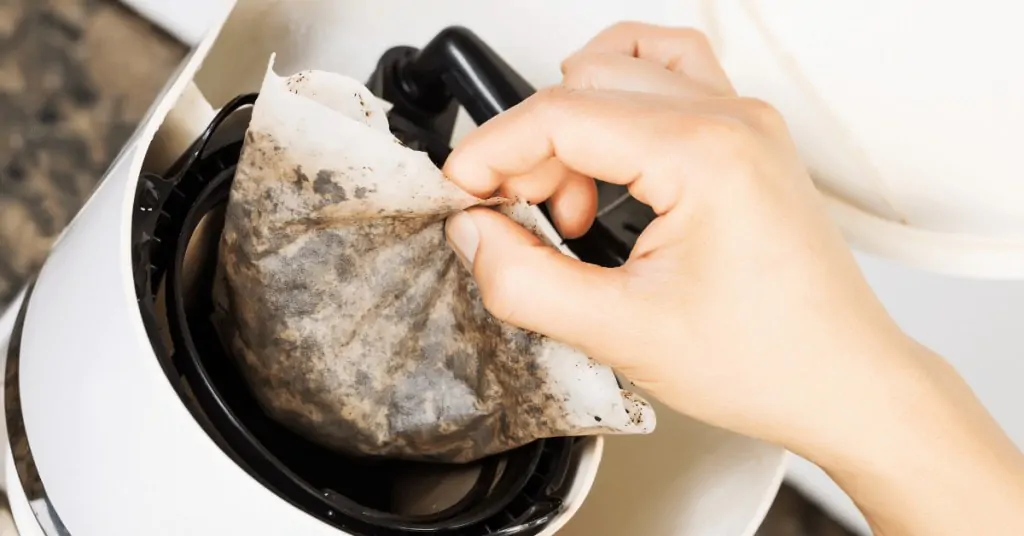
By now, you should know all the basics about coffee filters.
Still, I’m sure you’ve got some questions about usage and disposal.
Here are the answers to some of the things you might be wondering.
Can I Use #2 And #4 Filters Interchangeably?
Using a #4 instead of the #2 filter is pretty simple.
You just need to trim the edges with scissors so that it can fit into the basket.
Doing it the other way around is a bit harder, but not impossible. You just need to be slow and careful when pouring water. Otherwise, it might overflow and make a mess.
Can I Use A Paper Towel Instead?
If you’re out of coffee filters, a paper towel can serve as a substitute.
Just cut a few pieces down to the same size as your coffee filter.
Use 2 to 3 layers of paper towel, depending on how thick it is.
Just keep in mind that it’s better to use unbleached towels, as bleached ones might contain harmful chemicals.
Can I Compost A Coffee Filter?
Yes, you can, along with your used coffee grounds.
Obviously, we’re talking about paper filters here.
But in order to keep your compost organic, you should do this with unbleached filters only.
To Sum Things Up
As you can see, choosing the right coffee filter is not that straightforward.
First, you need to know the size and shape that’s suitable for your coffee maker.
Then, if your brewing method allows it, you need to choose the type.
A paper coffee filter gives you bright, sediment-free coffee.
Metal, on the other hand, lets oil and particles through, leaving you with a rich and bold cup of java.
Finally, cloth gives you a little bit of both.
Now that you’re armed with all the information you need, the choice will be easy.
Out of coffee filters? Discover the ways of making a cup of joe without a coffee filter.

